Agrisera supported Co- and posttranslational control in chloroplasts meeting
Agrisera supported the Co- and Post-translational Control in Chloroplasts workshop, held in Münster, Germany, between the 18th and 20th of November 2024. |  |
Agrisera supported the Co- and Post-translational Control in Chloroplasts workshop, held in Münster, Germany, between the 18th and 20th of November 2024. |  |
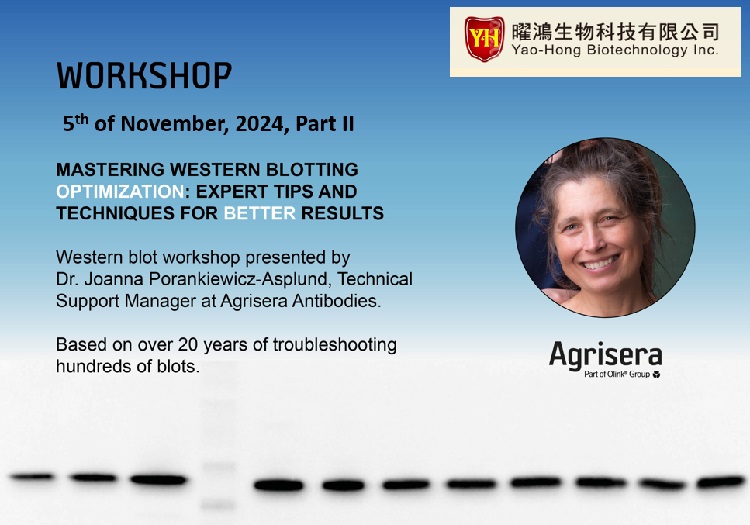
Researchers from the Chemical Biological Centre (KBC) at Umeå University visited Agrisera's facility in Umeå on the 7th of November. Principal Investigators, PostDocs and PhD students joined the tour. | |
| Between the 5th and 6th of November, Agrisera attended t 2024he KBC Days at the Chemical Biological Center of Umeå University. The KBC Days is an annual interdisciplinary conference, and this year's theme was "Sensing". The meeting had over 350 participants. PhD students held a 2-minute long elevator pitch to present their work. After evaluation of the committee, PhD candidate Sophia Hernandez was awarded The Agrisera Best Elevator Pitch Prize, for the talk "A SplitCas9 Based Conditional Knockout System to Characterize Essential Genes in Plasmodium berghei". Agrisera will be holding the technical workshop "Mastering Western Blotting Optimization: Expert Tips and Techniques for better results" for researchers at KBC on the 22nd of November, in person as well as online. If you are attending this workshop, you are welcome to send in your Western blot questions in advance! | |
Agrisera supported the 50th Midwest Southeast Photosynthesis Conference, held at the Turkey Run Inn Start Park in Marshall, Indiana, between the 25th and 27th of October. The conference celebrated its 50th anniversary, with keynote speakers Prof. Govindjee and Prof. Wim Vermass. | 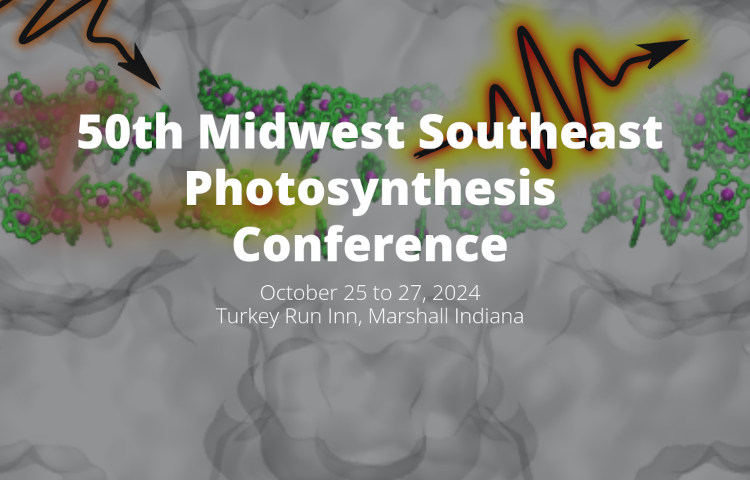 |
| The plant cell monoclonal antibody collection developed in the laboratory of Professor Paul Knox at the University of Leeds, United Kingdom, is available from Agrisera. Recent results of immunofluorescent staining of plant cell wall components were obtained using the following antibodies: Anti-Pectic polysaccharide, beta-1,4-galactan (monoclonal, clone LM5) Anti-Heteromannan (monoclonal, clone LM21) Anti-Heteroxylan (monoclonal, clone LM11) The cell wall components were visualized in the following material: Arabidopsis thaliana (stem), Pinus sylvestris (wood section) and Picea abies (wood). The images are courtesy of Courtesy of Dr. Jan Łyczakowski, Jagiellonian University, Kraków, Poland | 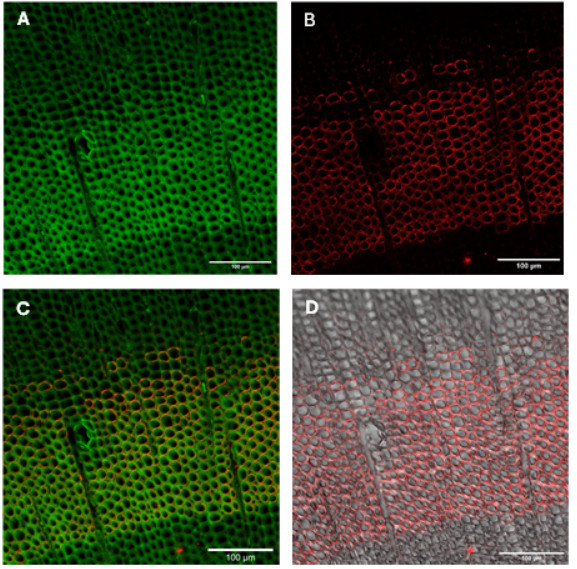 |
| Agrisera was present at the local event "Meet Umeå Biotech", held Monday the 21st of October. Anton Langman from Agrisera's protein lab and Anna Henningsson, presented our company in a 5-minutes pitch for an audience of 160 students from Umeå University. In total, eight local companies were represented, and the presentations were followed by a Q&A session. On the 22nd of October, Joanna Porankiewicz Asplund met with PhD students and Postdocs from Umeå Plant Science Centre (UPSC), to talk about carrier possibilities outside of academia. Joanna's background is in plant physiology. Before switching to work in industry, Joanna finished her PhD at Adam Mickiewicz University in Poznań, Poland, and continued her academic career as a Postdoc at UPSC. After her Postdoc, Joanna joined Agrisera, where she has been working for the last 25 years. | 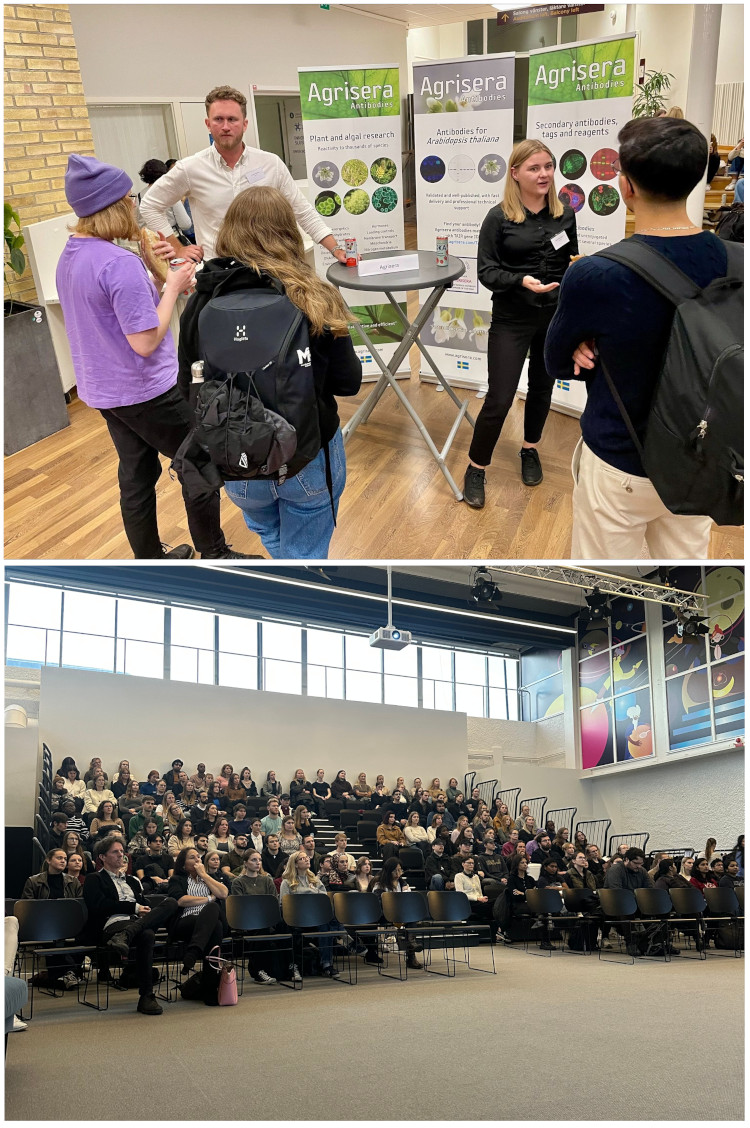 |
The focus of this month's new antibody release are specific antibodies to various proteins of plant mitochondria. Anti-SHMT1 | Serine hydroxymethyltransferase 1, mitochondrial |  Agrisera Antibodies to miochondrial proteins can be found here. |
Agrisera supported the 6th Summer Academy, held at the Center for Plant Molecular Biology (ZMPB), University of Tübingen, Germany, between the 14th and 16th of September. As the winner, he will be granted a free antibody of his choice from the Agrisera catalog. | 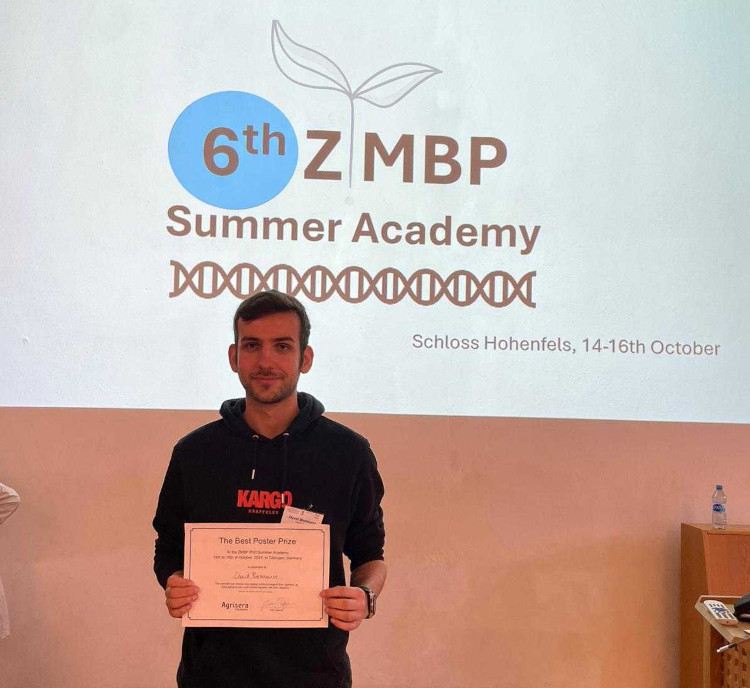 |
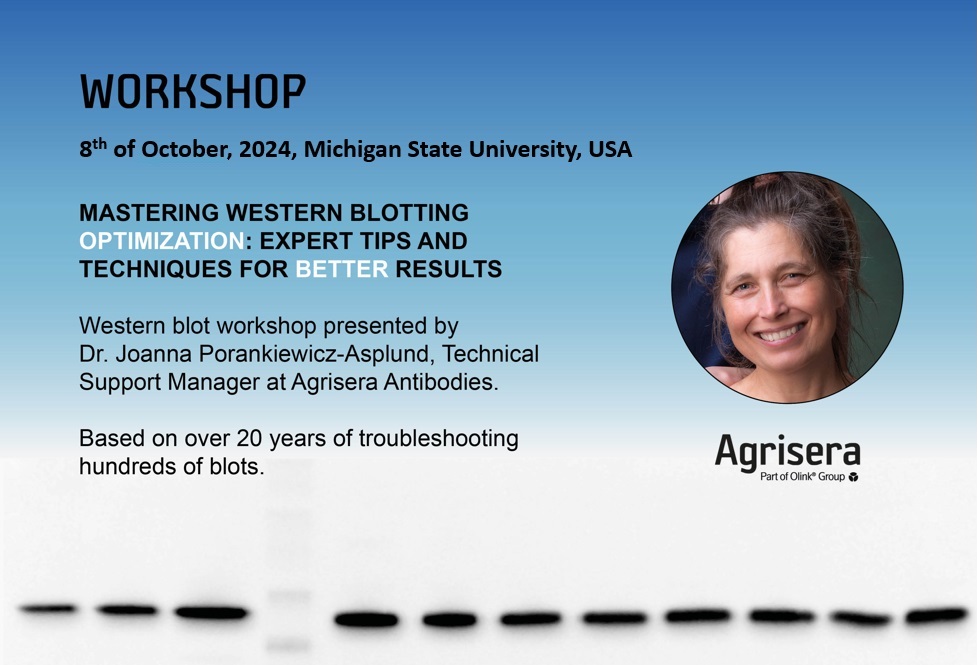
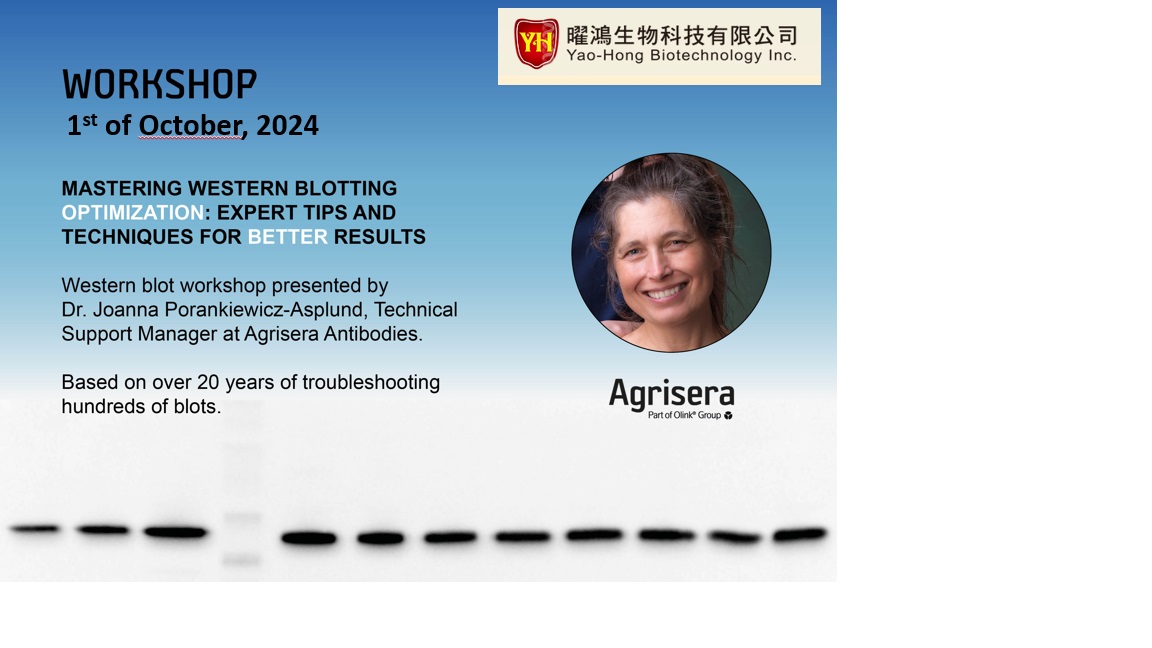
| This year's Jan Anderson Award, granted by the Australian Society of Plant Scientists was awarded to Associate Prof. Jenny Mortimer from School of Agriculture, Food and Wine of the University of Adelaide, Australia. Her group uses synthetic biology to develop new crops for food, and materials production, in controlled growth environments. This award acknowledges talented female plant science researchers, and is sponsored by Agrisera.
|  |
| Agrisera's Educational Poster number 8 is the first poster in our collection that focuses on methods of protein extraction. The content was developed in a collaboration between Agrisera's Technical Support Manager Dr. Joanna Porankiewicz-Asplund, and researchers with a long experience with protein extraction; Dr. André Graça, Prof. Antje Heese, Prof. Martha Ludwig and prof. Wolfgang Schröder. The contents were transferred into the graphical representation by Dr. Dmitry Shevela (SciGrafik, Sweden).
| 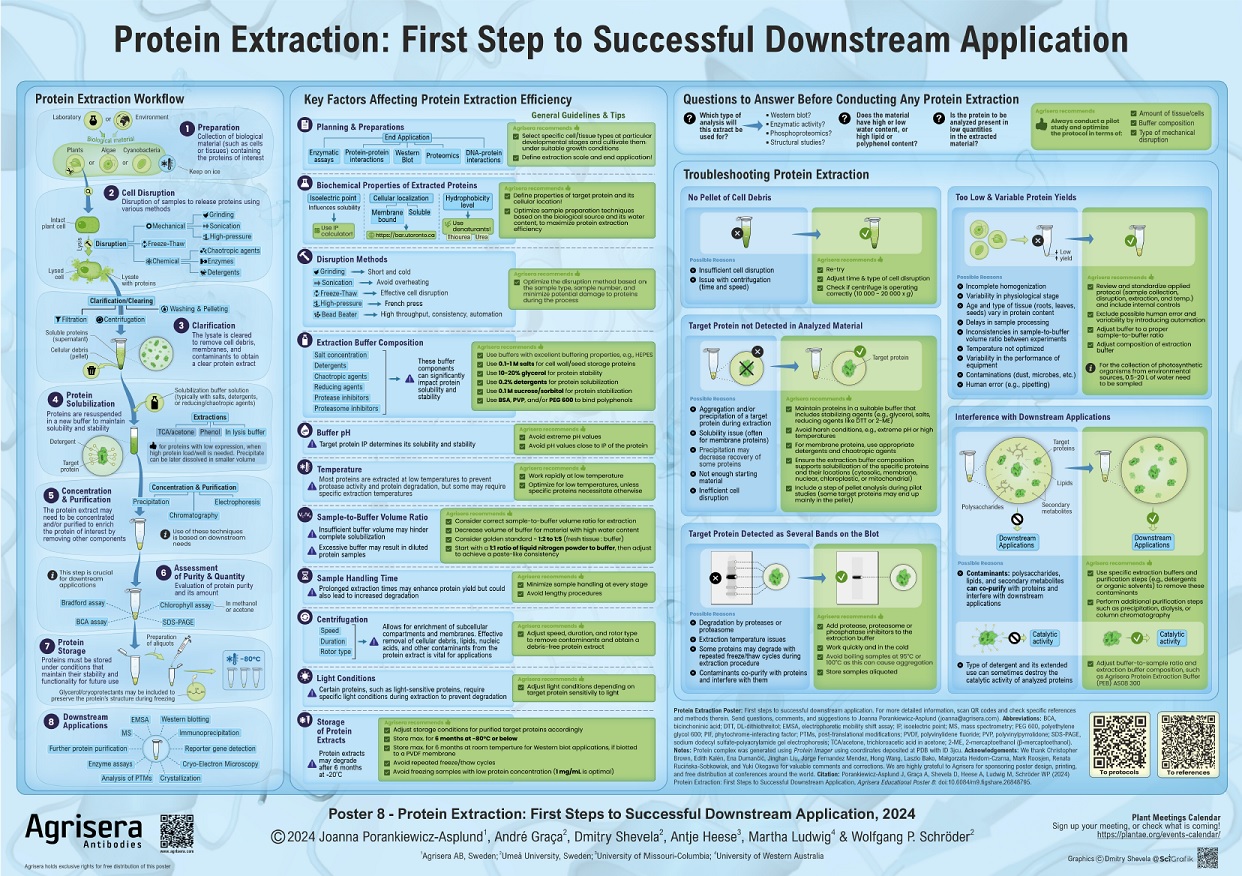
|
Agrisera participated in the International Conference of the German Society for Plant Sciences (DBG). The event took place at the Martin Luther University Halle-Wittenberg, Germany, between the 15th and 19th of September. Hundreds of enthusiastic plant scientists attended the meeting, which covered a wide range of topics, including biotechnology, cell biology, communication and dynamics of plant organelles, navigating abiotic challenges, and plant development, to name a few. | |
Agrisera participated in the Plant Meiosis meeting, held between the 4th and 6th of September, at Adam Mickiewicz University in Poznań, Poland. The meeting gathered enthusiastic researchers from the plant meiosis community, and was packed with interesting talks and poster sessions. | |
Agrisera participated in the Plant energy management, molecular mechanisms and signalling conference, held between 27th and 30th of August at Umeå University, Sweden. Over the last 40 years, Agrisera has developed strong collaborations with researchers from this local university, and we are always eager to support and participate in the local conferences. "Unleashing the Light Dependent Role of GIGANTEA : Orchestrating Tuberization and Meristem Activity in Potatoes". As the winner, he will be granted a free antibody of his choice from the Agrisera catalog. | |
Participants of the Plant energy management, molecular mechanisms and signalling conference, visited Agrisera's facility in Umeå. Principal Investigators, PostDocs and PhD students joined the tour on the 28th of August. Our visitors were from Columbia, India, France, Greece, Germany, Korea, Spain and Sweden. |
|
We are keen on meeting you! |
Is the product you are interested in not included in a current promotion? |
|
Four new species have been added to Agrisera's Search by species function, namely: |
|
Tagging a protein with TurboID allows the study of protein interactions in different types of cells and organs, as well as different developmental stages. This is a suitable tool for proximity labelling experiments, as described in Mair et al. (2019). Proximity labelling of protein complexes and cell-type-specific organellar proteomes in Arabidopsis enabled by TurboID. Elife. 2019 Sep 19;8:e47864. doi: 10.7554/eLife.47864. | References with Agrisera's BirA (mutated/TurboID): |
The Global Plant Events Calendar, run by ASPB/Plantae and Agrisera has celebrated its fifth year! This resource provides you with a comprehensive list of events, like conferences, workshops and webinars, some being free of charge. |
|
Beyond the current 15% discount for all epitope tag antibodies, Agrisera offers several epitope tag antibodies, currently under development, free of charge, in return for experimental results. |
Agrisera attended the 34th International Conference on Arabidopsis Research, in SanDiego USA, held between the 15th and 19th of July. Agrisera was represented by Dr. Chris Brown. |
|
The International Symposium on Iron Nutrition and Interactions in Plants (ISINIP) took place between the 8th and 12th of July, in Düsseldorf in Germany. Scientific sessions covered the following topics:
Best Poster Prizes from Agrisera were awarded to two young scientists. |
|
Rice is a staple food for more than half of the world's population, particularly in Asia, Africa, and Latin America. Research on this important crop includes: |
|
The Young Researchers Symposium on Photobiology (YRSPP) took place between 2nd and 5th of July in Utrecht, The Netherlands. |
|
The Second European Congress on Photosynthesis (EPS2) took place between the 25th and 28th of June in Padova, Italy. |
|
Epitope tag antibodies offer several benefits that make them invaluable tools for studying proteins in a wide range of applications, like Western blotting, immunoprecipitation, immunofluorescence, immunohistochemistry, and flow cytometry. |
|
Agrisera attended the Plant Biology 2024 conference in Honolulu, HI, USA, held between the 22nd and 26th of June. Agrisera was represented by Edith Kalén and Chris Brown. |
|
| Nguyen et al. used Agrisera antibodies to α–phosphoenolpyruvate carboxylase (PEPC) and histone 3 (H3) in the recent publication "The processed C-terminus of AvrRps4 effector suppresses plant immunity via targeting multiple WRKYs ", published in Journal of Integrative Plant Biology, June 2024. The following antibodies were used to confirm the cytoplasmic and nuclear fraction's purity: Anti-PEPC (AS09 458) (cytoplasmic fraction) Anti-H3 (AS10 710) (nucelar fraction) | 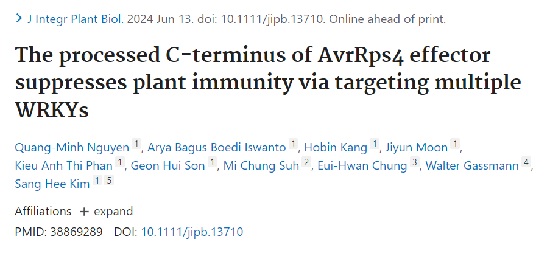 |
Between June 22nd - 26th, Agrisera is going to be present at the Plant Biology 2024, Honolulu, Hawai. The conference is organized each year by American Society of Plant Biologists (ASPB). The theme of this year's meeting is: "Celebrating Our Past through Science for Our Future". MSE Edith Kalén and Dr. Chris Brown are representing Agrisera at the meeting. You are welcome to come by Agrisera booth and talk antibodies with them. Dr. Brown has been involved in the development of Agrisera's Global Antibodies, to a wide range of key photosynthetic proteins, with broad species reactivity. Participants can pick up free hard copies of Agrisera's Educational Posters, prepared in collaboration with scientists in the field of photosynthesis and epigenetics, as well as the Agrisera product catalog and Agrisera Western blot troubleshooting guide. |  Come by and meet with Agrisera! | |
| Krysiak et al. used several of Agrisera antibodies to photosynthetic proteins in the recent publication "Light-independent pathway of STN7 kinase activation under low temperature stress in runner bean (Phaseolus coccineus L.)", published in BMC Plant Biology, June 2024. The following antibodies were used in mutant characterization: • Anti-AtpB | Beta subunit of ATP synthase (chloroplastic + mitochondrial) (rabbit antibodies), AS05 085 • Anti-CURT1A | Curvature thylakoid 1A, AS08 316 • Anti-Lhca2 | PSI type II chloropyll a/b-binding protein, AS01 006 • Anti-Lhcb1 | LHCII type I chlorophyll a/b-binding protein, AS01 004 • Anti-Lhcb1-P | LHCII type I chlorophyll a/b-binding protein, phopshorylated, AS13 2704 • Anti-Lhcb2 | LHCII type II chlorophyll a/b-binding protein, AS01 003 • Anti-Lhcb2-P | LHCII type II chlorophyll a/b-binding protein, phosphorylated, AS13 2705 • Anti-NtrC | Thioredoxin reductase (TR/TRxR) (higher plants), AS07 243 • Anti-PsaA | PSI-A core protein of photosystem I, AS06 172 • Anti-PsaB | PSI-B core subunit of photosystem I, AS10 695 • Anti-PsbA | D1 protein of PSII, DE-loop, AS10 704 • Anti-PsbC | CP43 protein of PSII, AS11 1787 • Anti-RbcL| Rubisco large subunit, form I (rabbit), AS03 037 | 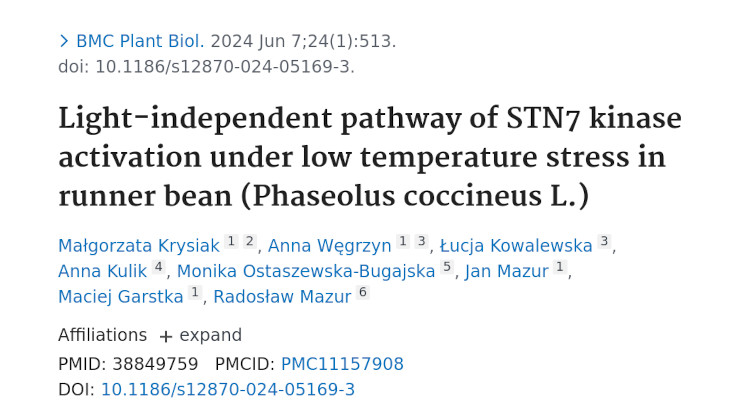 |
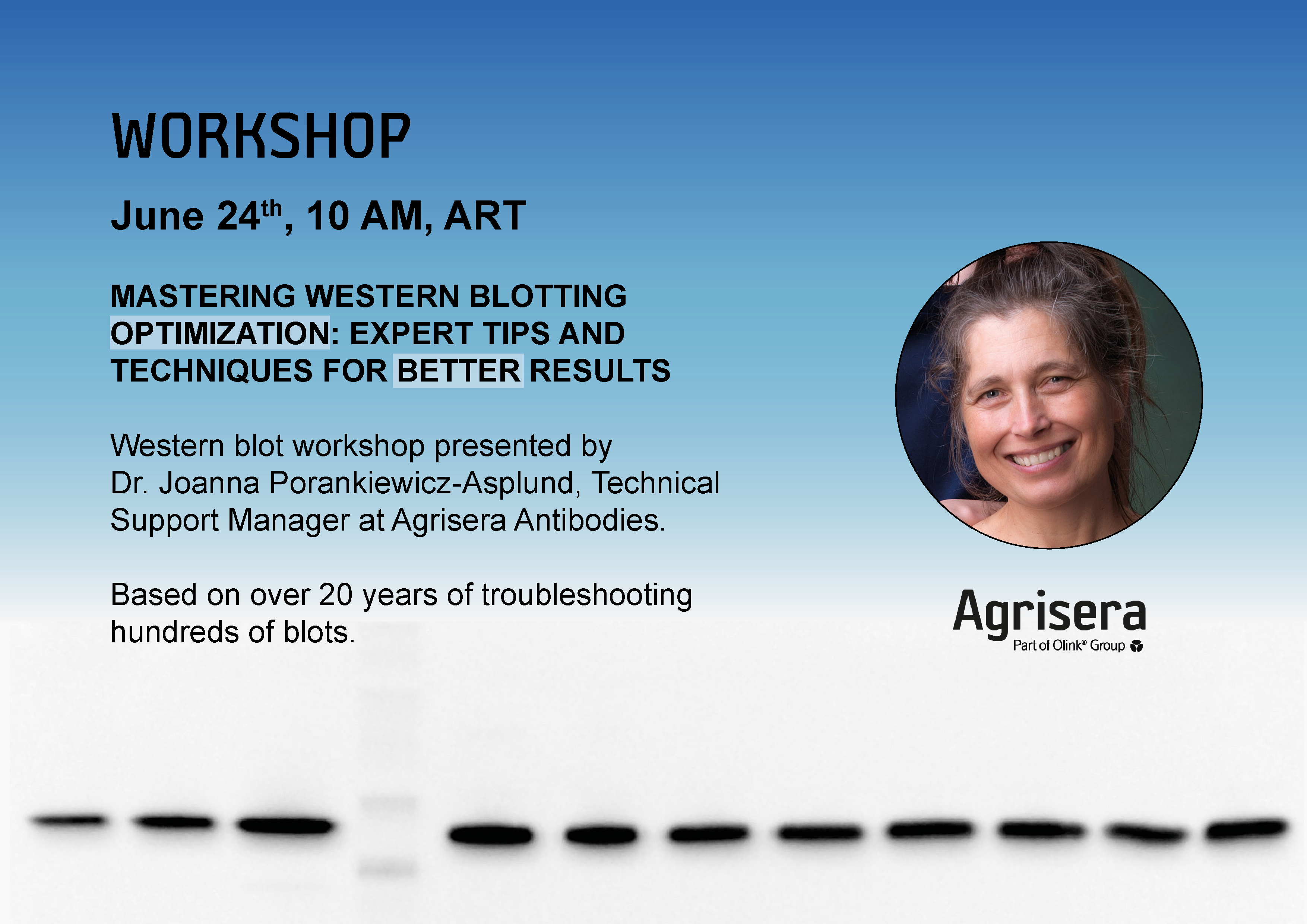
Details and sign-up form can be found here.
| Zhao et al. used several of Agrisera antibodies to photosynthetic proteins in the recent publication "Psb28 protein is indispensable for stable accumulation of PSII core complexes in Arabidopsis", published in Plant Journal, May 2024. The following antibodies were used in mutant characterization: • Anti-AtpB | Beta subunit of ATP synthase (chloroplastic + mitochondrial), AS05 085 • Anti-Cyt f | Cytochrome f protein (PetA) of thylakoid Cyt b6/f-complex, AS08 306 (AS20 4377) • Anti-Deg8 | protease Do-like 8 (chloroplastic), AS14 2767 • Anti-FtsH1+FtsH5 | ATP-dependent zinc metalloprotease FtsH1+FtsH5 (chloroplastic), AS16 3930 • Anti-FtsH2+FtsH8 | ATP-dependent zinc metalloprotease FtsH2+FtsH8 (chloroplastic), AS16 3929 • Anti-Lhcb2 | LHCII type II chlorophyll a/b-binding protein, AS01 003 • Anti-Lhca2 | PSI type II chloropyll a/b-binding protein, AS01 006 • Anti-PsaA | PSI-A core protein of photosystem I, AS06 172 • Anti-PsbA | D1 protein of PSII, C-terminal, AS05 084 • Anti-PsbB | CP47 protein of PSII, AS04 038 • Anti-PsbC | CP43 protein of PSII, AS11 1787 • Anti-PsbD | D2 protein of PSII, AS06 146 • Anti-PsbE | Alfa subunit of Cytochrome b559 of PSII, AS06 112 • Anti-PsbF | beta subunit of Cytochrome b559 of PSII, AS06 113 • Anti-PsbO | 33 kDa of the oxygen evolving complex (OEC) of PSII (anti-peptide), AS05 092 • Anti-RbcL | Rubisco large subunit, form I, AS03 037 | 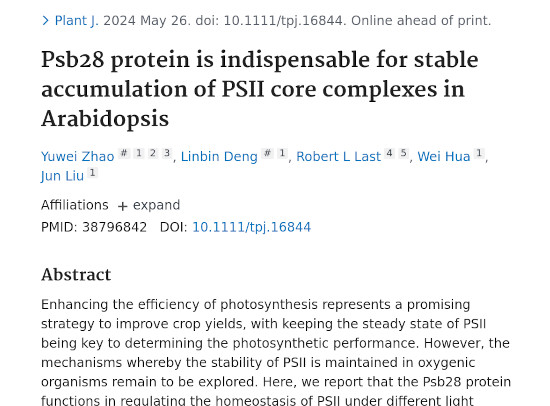 |
| This week, Agrisera supported two conferences: • International Society of Root Research, 12th International Symposium, June 2nd-7th, Leipzig, Germany. The three most important global challenges in terms of root biology are: climate change, biodiversity loss, and food security. Root research has a fundamental role in helping to solve these problems. • Postdoc Day 2024, 6th of June, UNIGE, Switzerland is organized each year by UNIGE PostDocs. Agrisera supported the meeting with The Best Talk Prize and the Agrisera Educational Posters. | 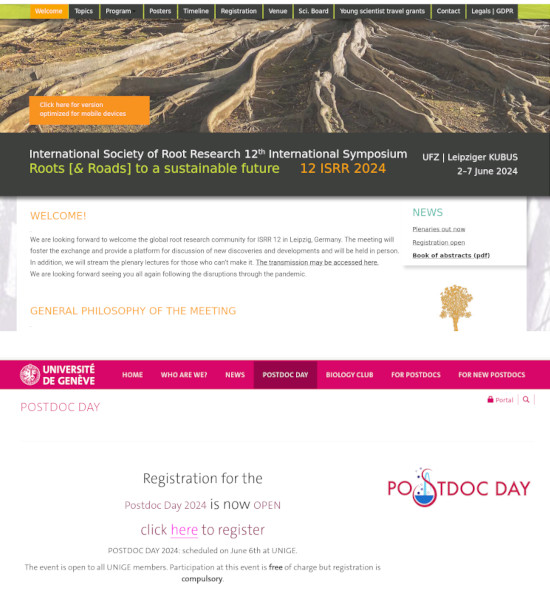 |
Agrisera is present at the 2nd American Photosynthesis Congress, held June 3rd-6th, at Georgia State University, USA. The conference covers all aspects of photosynthesis research. Participants can pick up free hard copies of Agrisera's Educational Posters, prepared in collaboration with scientists in the field of photosynthesis, as well as the Agrisera product catalog and Agrisera Western blot troubleshooting guide. Dr. Chris Brown is representing Agrisera at the congress. Come by and ask him any questions about antibodies for photosynthesis research. Dr. Brown has been involved in the development of Agrisera's Global Antibodies, to a wide range of key photosynthetic proteins, with broad species reactivity. | 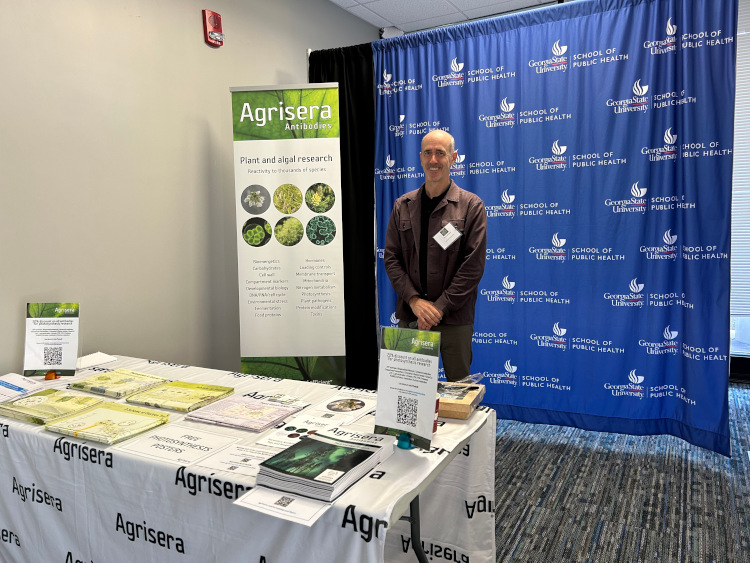 Dr. Chris Brown at Agrisera's booth. |
Agrisera supported the 13th International Coference for Plant Mitochondrial Biology (ICPMB), held May 26th-30th, in St Malo, France. This biennial meeting is an international forum for junior and senior academics researchers worldwide, who specialize in various aspects of plant mitochondrial biology. Participants could pick up free hard copies of Agrisera's Educational Posters, prepared in collaboration with scientists in the covered fields, as well as the Agrisera product catalog and Agrisera Western blot troubleshooting guide. | 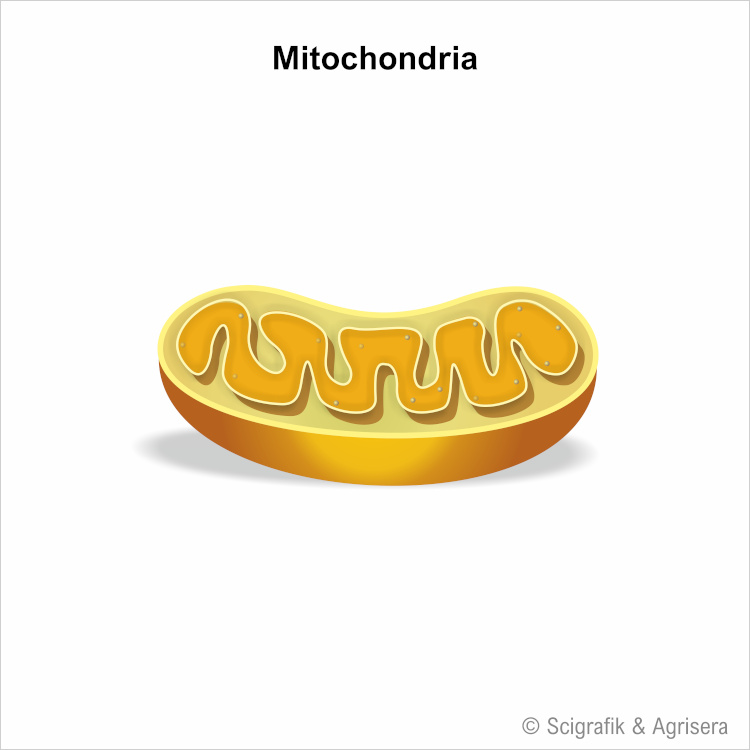 |
Chloroplasts are essential plant cell organelles, responsible for photosynthesis and other important metabolic processes. Their biogenesis and architecture are complex and highly regulated processes. Agrisera antibodies can help you investigate various proteins involved in this process. The antibody collection includes: CURT1A | Curvature thylakoid 1A CURT1B | Curvature thylakoid 1B CURT1C | Curvature thylakoid 1C CURT1D | Curvature thylakoid 1D You are always welcome to provide us new antibody suggestions and be the first to use the produced antibody. |  |
| Sucrose metabolism plays a crucial role in energy production, carbon partitioning, and sugar transport. It is therefore essential for cellular function, growth and development in plants. Using Agrisera antibodies, proteins involved in various stages of this process can be tracked. Sucrose breakdown involves an enzyme called sucrase (invertase), which cleaves sucrose into the monosaccharides glucose and fructose. Sucrose biosynthesis occurs primarily in the cytoplasm of photosynthetic cells, and involves the enzymes sucrose phosphate synthase (SPS) and sucrose phosphate phosphatase (SPP). These enzymes are involved in the production of sucrose, which can then be transported to other plant tissues for storage or energy utilization. Check out Agrisera's full collection of antibodies to proteins involved in sucrose metabolism. |  |
| This week, Agrisera supported 9th Plant Biochemistry Symposium: Plant Metabolites and Signaling held at Leibniz Institute of Plant Biochemistry in Germany. Participants could pick up free hard copies of Agrisera Educational Posters, prepared in collaboration with scientists in the field. |  |
| Light-harvesting complexes (LHCs) are essential components of the photosynthetic machinery, allowing photosynthetic organisms to efficiently capture and utilize light energy for the synthesis of organic molecules. The LHCs are integral membrane protein complexes found in the thylakoid membranes of plants, algae, and cyanobacteria. Agrisera's LHC antibody collection has been available since the year 2001, with hundreds of scientific references for a wide range of plant and algal species. Check out Agrisera's LHC antibodies: Lhca1 | Lhca2 | Lhca3 | Lhca4 | Lhca5 | Lhcb1 | Lhcb2 | Lhcb3 | Lhcb4 | Lhcb5 | Lhcb6 Full collection: Antibodies Plant/Algal / Photosynthesis / LHC |  |
| Agrisera supports BioLock student conference, held between the 10th and 12th of May at the University of Wrocław, Poland. The aim of the meeting is, as the organizers describe it, "to expand horizons in the fields of biotechnology, biochemistry, and related disciplines. In other words, embracing both the most crucial and the latest scientific achievements!" Agrisera supported the meeting with free hard copies of our Educational Posters. |  |
| Finding the correct secondary antibody can be difficult, so we have put together a Secondary Antibody Guide to help you find exactly what you need. A lot of what you need to know about Agrisera secondary antibodies can be found in their name, but it may be hard to decipher. Our guide walks you through common terms related to secondary antibodies, as well as antibody recommendations and FAQs. Check out our guide and find answers to questions like:
Check out Agrisera's Secondary Antibody Guide! | Check out our guide for information on antibody structure, fluorescent dyes and much more! |
| To directly conjugated a primary antibody to an enzyme, like ALP or HRP, or a fluorescent dye, like DyLight®, the antibody must be of the highest purity; purified against the specific antigen. Q: What are the benefits of using directly conjugated primary antibodies? A: The time necessary to complete all steps of a Western blot or immunolocalization protocol, is shortened considerably, as there is no need for secondary antibody incubation and subsequent washes, before the final reaction can be visualized. Potential cross-reactions, which may occur when using secondary antibodies, are also eliminated. Possible sample loss due to washing steps is also reduced. Until end of 2024, all directly conjugated Agrisera primary antibodies are discounted by 10%, when applying the discount code Primconj10. Check out the complete Agrisera collection of directly conjugated primary antibodies here. | 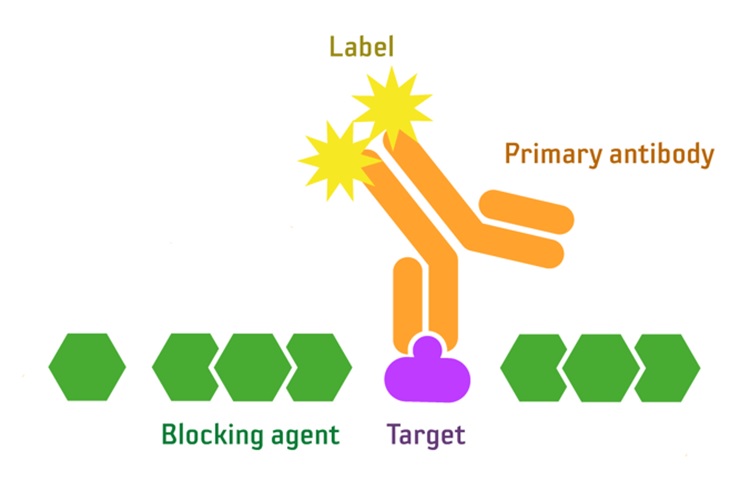 Using directly conjugated primary antibodies, is most beneficial for protein targets of high and moderate abundance in the analyzed tissue. |
| Electron transfer in the thylakoid membrane generates energy through the synthesis of adenosine triphosphate (ATP). The enzyme ATP synthase catalyzes the formation of ATP from adenosine diphosphate (ADP) and inorganic phosphate (Pi), using the proton gradient established across the membrane. Additionally, NADPH, produced during electron transfer, serves as a source of reducing power for the Calvin cycle, where carbon dioxide is fixed and converted into carbohydrates. This process in the thylakoid membrane plays a crucial role in harnessing light energy and converting it into chemical energy. Agrisera's collection of antibodies to proteins involved in electron transfer offers you the following advantages:
Explore and pick up suitable antibodies here. | 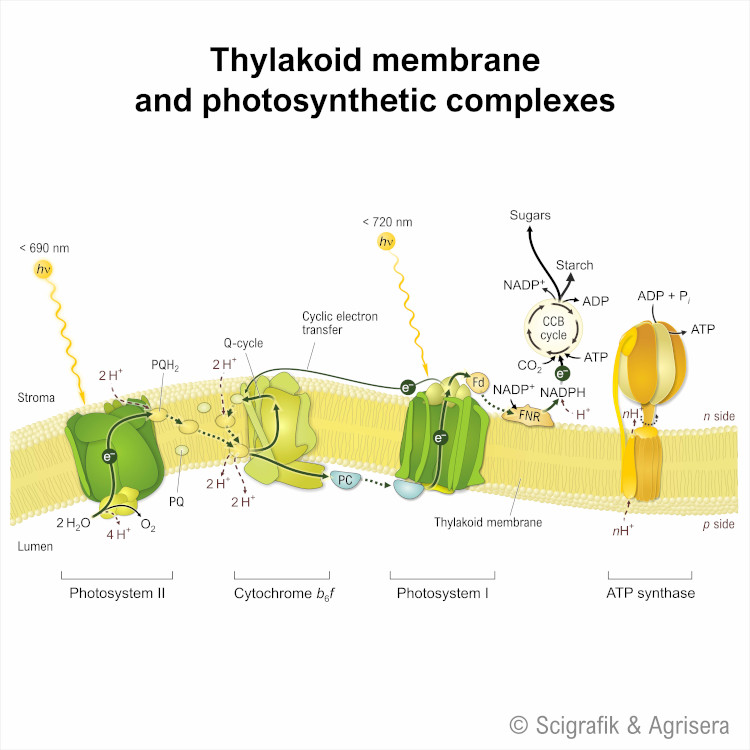 For more images of schemes and photosynthetic complexes, check free images for download here. |
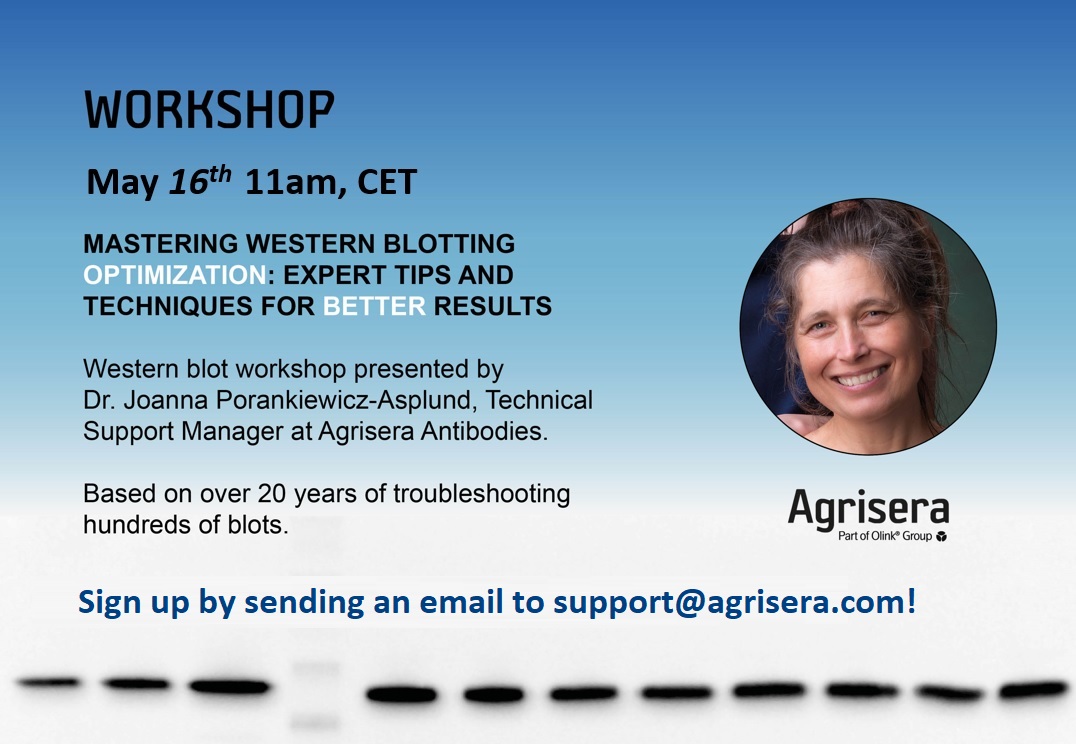
Conducted by: Dr. Joanna Porankiewicz Asplund, Technical Support Manager from the Swedish company Agrisera
Duration: Approximately 2 hours, with Q&A sessions, and a break, during which you have the chance to win prizes in an online quiz. Western blot and antibody questions can be sent in advance to [email protected]
Technique: Western blot is used in laboratories working with protein detection in complex mixes, as well as protein quantification.
Suitable for: Beginners and experienced users of this technique, working various types of samples, including bacterial extracts, plant tissue and algal cell cultures.
About the presenter: Dr. Joanna Porankiewicz Asplund, Technical Support Manager at Agrisera, has been working with antibody validation for over 20 years, and has troubleshooted hundreds of blots, which has allowed her to gain extensive experience, and an overview on potential difficulties and ways to address them. She is responsible for technical support at Agrisera, and will be happy to share her knowledge during the workshop.
Provided materials:
• Certificate of participation
• Slides of the presentation in pdf format, with useful links
• Slides of the presentation in ppt format, for free use in teaching
• Recording of the workshop
Sign up for this free workshop by sending an email to [email protected]!
Start: 11 am (Central European Time), 10 am (UK), 12 am (Helsinki)
Feedback from participants of previous workshops:
"Thanks! It was a very nice and informative workshop :)" – Wageningen University & Research Laboratory of Biochemistry, The Netherlands.
"Thank you very much for the workshop! I myself learned quite some additional things, I didn’t know before. And I talked to some of my colleagues just now and they also really liked your workshop. Thanks also for providing the pdf, I will send them to the participants! I really enjoyed your presentation and I can see how dedicated you are about western blots, it was really great to listen to you!" – Max Planck Institute of Molecular Plant Physiology in Potsdam-Golm, Germany. Read more feedback here
| Rubisco (Ribulose-1,5-bisphosphate carboxylase/oxygenase) catalyzes the rate-limiting step of CO2 fixation in photosynthetic organisms. It is demonstrably homologous, from purple bacteria to flowering plants, and consists of two protein subunits, each present in 8 copies. In plants and green algae, the large subunit (~55 kDa) is coded by the chloroplast rbcL gene, and the small subunit (15 kDa) is coded by a family of nuclear rbcS genes. There are the following advantages of using Agrisera antibodies to Rubisco:
In the recent publication by Nuamzanei et al. (2024). "Impact of polyvinyl chloride (PVC) microplastic on growth, photosynthesis and nutrient uptake of Solanum lycopersicum L. (Tomato)", was investigated, using anti-RbcL antibodies from Agrisera. Explore and pick up suitable antibodies or kits for the detection of the most abundant protein on Earth, Rubisco. | 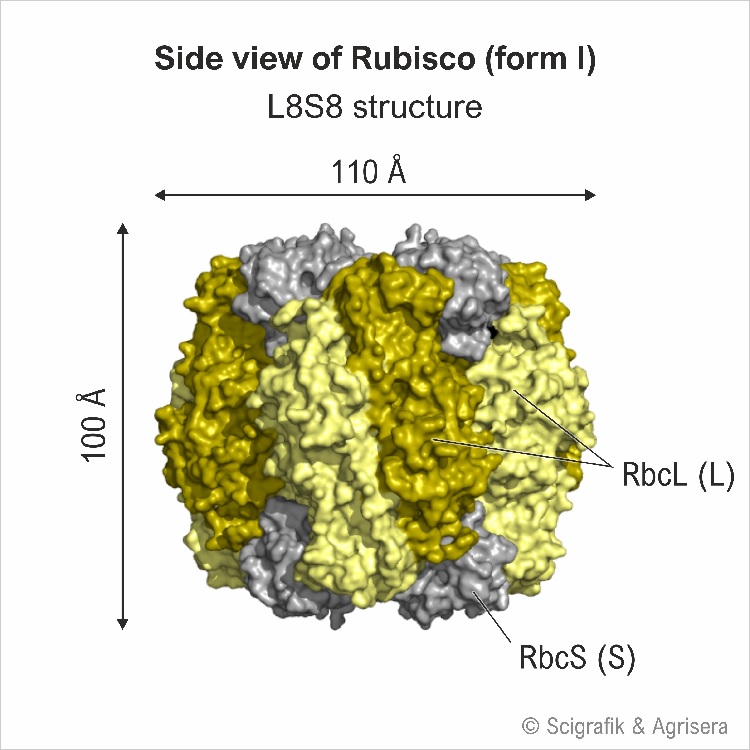 For images of Rubisco, and schemes in which this protein is involved, check out our free images for download here. |
| A matching secondary antibody, that can be used at high dilutions, will contribute to good Western blot results, with less risk for background signal. Beyond this, it can be used for many experiments, and is therefore very cost-efficient. The differences between secondary antibodies from various suppliers are discussed here. Agrisera's primary antibodies are produced in chicken, goat, mouse, rabbit and rat. The following high-titer secondary antibodies are appropriate matches:
*This antibody is in the group of the most published antibodies in the world, based on publication record analyses performed by CiteAB. | 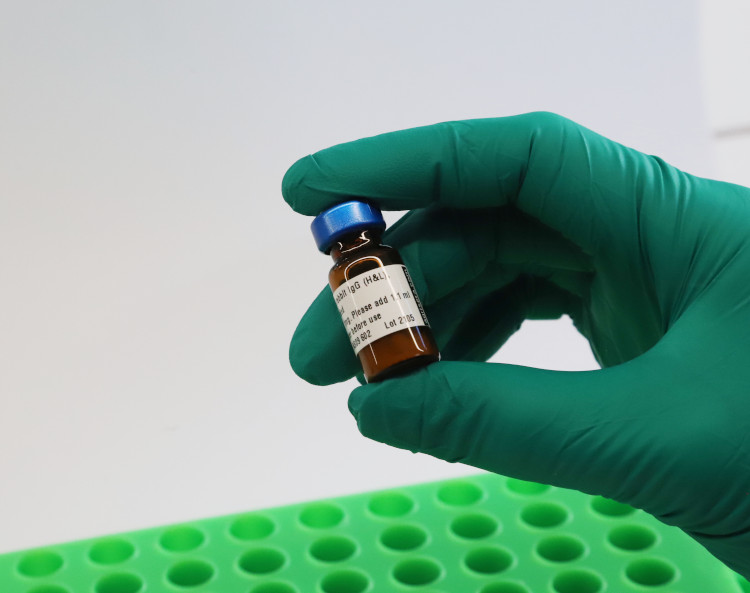 If you need advice on the choice of the most suitable secondary antibody for your experiments, please ask us, either through the chat on Agrisera website, or by email. |